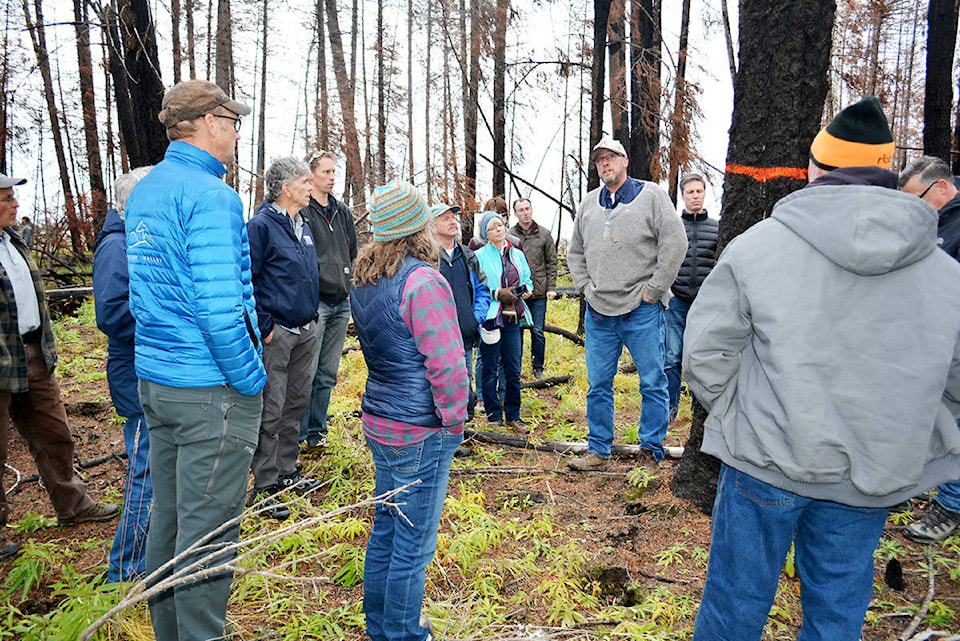In contrast to replaceable forest licences with a few large corporations controlling over 50 per cent of the Allowable Annual Cut (AAC) there are approximately 865 active woodlots in B.C. with an AAC of 1.579 million cubic meters annually; or 2.3 per cent of the provincial cut.
As described in the Federation of BC Woodlot Associations website woodlot licences are small area based forest tenure partnerships between the license holder and the Province of B.C. to manage public and private forest lands.
For older woodlot licences the maximum Crown land portion was 600 (Interior) or 400 (Coast) hectares of Crown land, this was later increased to maximum allowable Crown land portion of 1,200 and 800 hectares, Interior and Coast respectively. Despite being small in terms of area and the amount of timber harvested, woodlot licenses make significant economic, environmental, and societal contributions. Woodlot licences feature a high standard of sustainable forest management. They are often located in hard-to-manage, even controversial areas, where personal attention to management leaves a light footprint on the land.
READ MORE: Woodlot associations AGM to tackle wildfire impacts, prevention and risk reduction
A number of governments have attempted an expansion of the wood lot program for the past 40 years. A 2007 report showed 826 woodlot licences had been established which was short of the 1,000 promised expansion target with a lack of ministry staff and resources given as the main reason for not achieving the goal. During my involvement with the wood lot program in the 1990s my concern was an onerous amount of government involvement relative to the harvest level attached to the licence.
The licence documents and reviews were nearly as demanding for a few thousand cubic metres on a woodlot as it was for hundreds of thousands of cubic meters for a major licence. Similar conclusions were observed by other studies like the one by J. M. Bakewell back in 1988 which showed onerous contractual obligations limiting profitability, and a timber-pricing system that is inappropriate to the tenure.
Efforts to address these shortcomings have been ongoing, but progress has been slow. Recommendations for administrative efficiencies developed by the Ministry of Forest and Range’s (MOFR) Woodlot Administration Review and Recommendation Team (WARRT) have yet to be implemented, and a more appropriate timber pricing system has yet to be developed. As pointed out in the report most woodlot owners need other jobs because the size of the woodlot is not sufficient to support them.
READ MORE: Forest tenure changes are occurring throughout the world
Based on the good compliance track record that the woodlot licensees have, my suggestion is to consider a larger area for new woodlot licences (to make it economical), along with minimal government regulations supported by a professional reliance approach to management. Perhaps a number of larger woodlots along with a community forest in the central Chilcotin and or Nazko would be a good area to test some new concepts in forest management. The First Nations communities around Hanceville and Alexis Creek could benefit from some forest tenures that would provide log sale profits for the locals and could encourage small scale lumber, chip and bioenergy facilities.
Jim Hilton is a professional agrologist and forester who has lived and worked in the Cariboo Chilcotin for the past 40 years. Now retired, Hilton still volunteers his skills with local community forests organizations.
Do you have a comment about this story? email:
editor@wltribune.com
Like us on Facebook and follow us on Twitter.
